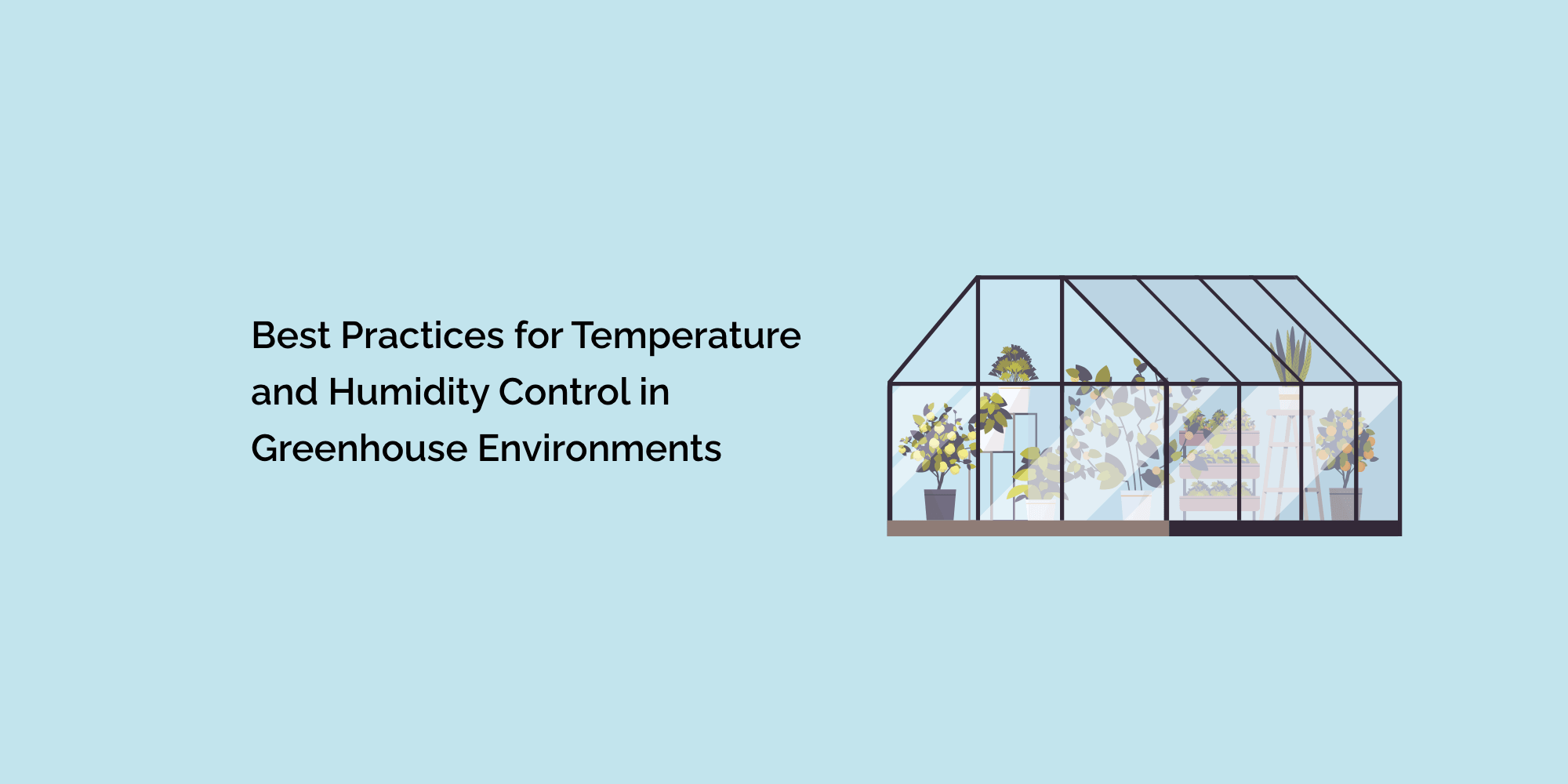Temperature and humidity control are critical factors in creating optimal growing conditions for greenhouse plants. The right balance ensures healthy growth, prevents stress, and minimizes disease risk. This detailed blog post will explore the best practices for temperature and humidity control in greenhouse environments. These practices allow greenhouse operators to maximize crop quality and yield while promoting a sustainable and efficient growing environment.
Understanding the Ideal Temperature Range:
- Crop-Specific Requirements: Different crops have specific temperature requirements for optimal growth. Research the ideal temperature ranges for your cultivated produce to ensure you provide the right conditions. Some plants prefer cooler temperatures, while others thrive in warmer climates. Understanding the temperature preferences of your crops is essential for achieving desired results.
- Day and Night Temperature Variations: Consider the daily natural temperature fluctuations in outdoor environments. It is generally beneficial to maintain slightly cooler temperatures at night compared to the daytime, as this can mimic natural conditions and promote healthier plant development. Aim for a temperature drop of around 5-10 degrees Fahrenheit (2-5 degrees Celsius) at night.
- Temperature Control Zones: Divide your greenhouse into temperature control zones based on crop requirements. This allows you to adjust temperatures more precisely for different greenhouse sections. For example, seedling areas may require higher temperatures, while mature plant areas may benefit from slightly cooler temperatures.
Effective Heating and Cooling Systems:
- Insulation: Proper insulation is essential for preventing heat loss during colder periods and minimizing heat gain during hotter periods. Insulate the greenhouse's walls, ceiling, and flooring using high-insulating materials. This reduces energy consumption and ensures a more stable internal temperature.
- Heating Systems: Select energy-efficient heating systems that suit your greenhouse size and requirements. Options include gas or electric heaters, radiant heating, or geothermal systems. Install the heating system strategically to ensure even heat distribution and minimize energy waste.
- Cooling Systems: Implement cooling systems to regulate temperature during warmer periods. Evaporative cooling, shade cloths, or fans can effectively reduce temperatures in the greenhouse. Utilize natural ventilation through windows or vents to promote air circulation and prevent excessive heat buildup.
Monitoring and Controlling Humidity:
- Ideal Humidity Range: Maintaining the appropriate humidity levels is crucial for plant health and growth. The excellent humidity range depends on the crop, but generally, most greenhouse crops thrive within a relative humidity range of 50% to 70%. Research the specific requirements of your crops and aim to maintain conditions within their preferred content.
- Irrigation Management: Proper irrigation practices help control humidity levels. Avoid overwatering, as excessive moisture can lead to high humidity and potential fungal issues. Use irrigation techniques such as drip irrigation or automated systems to deliver water directly to the plant roots and prevent waterlogging.
- Ventilation and Dehumidification: Implement proper ventilation systems to regulate humidity and reduce excess moisture. Ventilation helps replace humid air with fresh air from the outside. Consider using dehumidifiers to maintain optimal humidity levels and prevent mold or fungal growth in cases where humidity is consistently high.
Utilizing Technology and Automation:
- Environmental Sensors: Install temperature and humidity sensors throughout the greenhouse to monitor conditions accurately. These sensors provide real-time data, allowing you to make informed decisions and adjust temperature and humidity control systems as needed.
- Automated Control Systems: Integrate mechanical control systems that utilize sensor data to modify heating, cooling, and humidity control systems. These systems can be programmed to maintain specific temperature and humidity setpoints, ensuring precise and consistent environmental conditions.
- Data Analysis and Predictive Modeling: Leverage data analysis and predictive modeling techniques to optimize temperature and humidity control. Analyze historical data to identify patterns and trends, enabling proactive adjustments and minimizing energy waste. Predictive modeling can help anticipate temperature and humidity changes, allowing for proactive system adjustments.
Regular Maintenance and Monitoring:
- Regular System Checks: Perform routine maintenance checks on heating, cooling, and humidity control systems to ensure they operate optimally. Clean filters, inspect fans and replace worn-out parts to maintain system efficiency.
- Regular Data Monitoring: Monitor temperature and humidity data regularly to detect abnormalities or trends. This helps identify potential issues and allows for timely intervention. Actively track and analyze the data to make informed decisions regarding system adjustments and crop management.
Certainly! Here are some frequently asked questions (FAQs) about temperature and humidity control in greenhouse environments:
Can I use automation to control the temperature and humidity in my greenhouse?
Yes, automation systems can be utilized to control temperature and humidity in greenhouses. These systems integrate sensors that monitor temperature and humidity levels and adjust heating, cooling, and humidity control systems accordingly. Automation ensures precise and consistent control, even when operators are not physically present.
How often should I monitor the temperature and humidity in my greenhouse?
The frequency of temperature and humidity monitoring depends on various factors, such as the specific crops being cultivated, external weather conditions, and the level of automation in your greenhouse. As a general recommendation, monitoring should be done regularly throughout the day, especially during significant temperature or humidity fluctuations.
Conclusion:
Achieving optimal temperature and humidity control is crucial for successful greenhouse cultivation. By understanding your crops' temperature and humidity requirements, implementing effective heating and cooling systems, monitoring and controlling humidity levels, utilizing technology and automation, and maintaining regular maintenance and monitoring practices, you can create an ideal growing environment. These best practices will maximize crop quality and yield and promote energy efficiency and sustainability in your greenhouse operations. By prioritizing temperature and humidity control, you are taking a significant step towards achieving healthy and thriving plants in your greenhouse.








